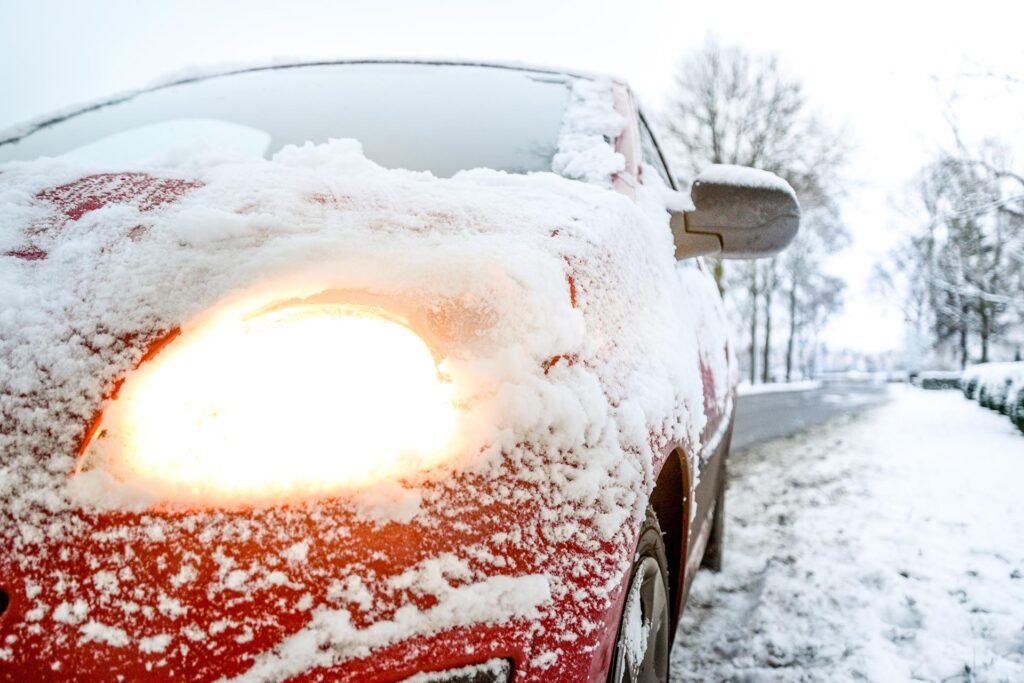This blog will discuss Winter Driving Tips and provide some useful advise to stay safe in Winter. It is recommended to stay off the road during winter storms, unless travel is absolutely necessary. If roads are closed, do not travel at all.
Winterize your vehicle, Check your vehicle’s:
- tires (including your spare)
- battery
- belts and hoses
- anti-freeze
- brakes
- heater
- defroster
- windshield wipers
Consider winter tires
Winter or snow tires are specially designed for the low temperatures and snowy and icy conditions we experience in Alberta. They provide better traction than regular or all-season tires. All tire rubber stiffens as the weather gets colder, but the latest generations of winter tires maintain their elasticity even at extremely low temperatures approaching -30°C and below, providing superior traction and grip.
Read about why winter tires are a sound investment (PDF, 126 KB).
Keep an emergency kit in your vehicle:
The emergency kit should include:
- first aid kit
- fire extinguisher
- blanket
- road map and compass
- extra clothing and footwear
- paper towel or rags
- sand, road salt or non-clumping kitty litter
- flashlight with extra batteries
- emergency food – anything that won’t spoil like granola bars, nuts or chocolate
- ice scraper and snowbrush
- cell phone
- candle in a deep tin
- waterproof matches
- shovel
- booster cables
Keep your car fuelled:
Keep your vehicles more than half full of fuel to help reduce moisture in your fuel system, which adds extra weight to your vehicle. A topped-up gas tank will also help if you become stranded.
When you drive before you go:
- clean snow and ice off your vehicle’s windows
- side view mirrors
- headlights
- taillights
- licence plates
- buckle up and adjust head rests (the centre of your head rest should be even with the top of your ears)
- Drive safe
Practice safe driving techniques:
- slow down, as posted speed limits are intended for ideal road conditions (and winter roads are not ideal)
- you’re legally required to drive according to road conditions and can get a ticket if you don’
- stay back from snowplows until they let you pass
- plan your destination ahead of time
- keep your headlights on so drivers behind you can see your tail lights – don’t rely on daytime running lights
- when changing lanes:
- signal early to let other drivers anticipate and react
- check your rearview and side mirrors, and always shoulder check before changing lanes
- avoid sudden moves (swerving or braking) that could cause you to spin out of control
- never use cruise control in winter conditions
- when driving on slick roads:
- allow at least 3 times the normal following distance
- remember that bridge decks are often slicker than other parts of the highway due to greater temperature fluctuations
- on snowy roads, try driving outside of the previous tire tracks for extra traction
- know your braking system and how it reacts on ice:
- be gentle with braking pressure on slick roads
- avoid braking on curves – drive through at a safe, steady speed
- accelerate slightly when approaching hills and then maintain a steady speed going up
- gear down for both uphill climbs and downhill grades to avoid brake wear and chances of sliding
- be careful of abrupt downshifting which can cause skidding, particularly when turning
- take your foot off the brake if you start to skid, and steer in the direction you want to go; when the wheels regain their grip, brake firmly and smoothly
- when driving a rear-wheel drive, prepare to steer just enough in the opposite direction to prevent a counter skid
Winter Driving Lessons:
If you have driven in Winter condition, it is recommended to Winter Driving Lessons from a licensed driving school in Edmonton.

